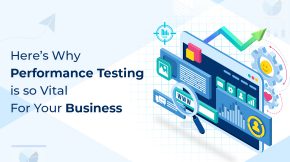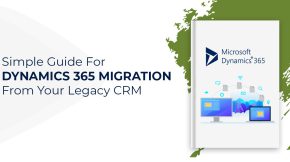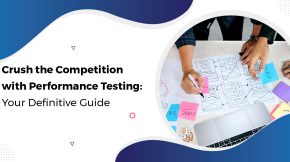What is Latest in Data Analytics Technologies: Exploring Breakthroughs in Snowflake, Data bricks, Power BI and Beyond
We live in a data-driven world. Virtually every activity creates digital traces full of valuable insights. Forward-thinking organizations are harnessing data analytics to unlock this knowledge and gain an unbeatable competitive edge.
Let’s explore the latest breakthrough technologies empowering the data revolution, including Snowflake, Databricks, Power BI, and more.
The Soaring Importance of Data Analytics
First, let’s examine the soaring importance of data analytics. IDC predicts global spending on big data and analytics will grow from $215 billion in 2021 to over $260 billion in 2025.
Why this meteoric rise? Because data is transforming how businesses operate. Analytics enables smarter decisions, optimized efficiency, reduced risk and entirely new operating models.
Consider how data fuels competitive advantage:
- Retailers like Amazon analyze customer data to predict demand, tailor promotions and maximize lifetime value.
- Manufacturers use sensor data to spot defects, reduce downtime and optimize supply chains.
- Banks employ analytics to model risk, detect fraud, improve lending decisions and personalize financial advice.
Simply put, organizations not leveraging analytics risk extinction. To thrive today, using data to systematically drive performance is not optional – it’s a requirement.
Demystifying Complex Analytics
For many, the data analytics landscape appears bewilderingly complex. Let’s demystify things by reviewing key technologies:
Cloud Data Warehouses
Tools like Snowflake and BigQuery provide immense storage and computing power for data analytics. Snowflake’s architecture optimizes for flexibility and scalability.
Unified Analytics Platforms
Databricks integrates the best of big data and AI to streamline pipeline management and ML model development. It builds on open-source Apache Spark.
Business Intelligence (BI)
Tableau, Looker, Power BI and Qlik enable interactive data visualization. They focus on transparent delivery of insights to organizational stakeholders.
Collaborative Analytics
Sigma facilitates data exploration for both technical and non-technical users. Its emphasis is on collaborative analytics.
Data Build Tool (dbt)
This transformation tool structures raw data for analysis. dbt codifies analytics pipelines for reliability and consistency.
Powerful Real-World Applications
Let’s explore impactful real-world applications across sectors:
Retail
- Personalized promotions based on purchase history
- Inventory optimization using sales forecasts
- Determining store layout strategy with spatial analytics
Telecom
- Analyzing network data to improve performance
- Predicting customer churn to boost retention
- Optimizing 5G spectrum costs using machine learning
Financial Services
- Detecting fraud in real-time using AI
- Automating loan underwriting with predictive models
- Providing wealth advice tailored to investor risk profiles
Manufacturing
- Reducing scrap with predictive equipment maintenance
- Minimizing supply chain costs using simulations
- Monitoring product quality via IoT sensor data
The possibilities are endless. From personalized marketing to predictive maintenance, the insights unlocked by analytics create immense value.
The Powerful Benefits of Data Analytics
So what specific benefits can organizations realize from embracing data analytics? The advantages span across key business functions:
Informed Decision Making – Analytics provides granular insights to support strategic decisions. Leaders can move from intuition to evidence-based choices that consider all variables.
Improved Efficiency – Data identifies process bottlenecks and areas of waste. Teams can use these insights to streamline operations, reduce costs and boost productivity.
Enhanced Customer Experiences – Analyzing customer data allows organizations to understand pain points, personalize offerings and strengthen engagement through targeted outreach.
Competitive Advantage – Companies that adopt analytics gain an edge. They can rapidly adapt to market changes, and make calculated moves based on data versus guesswork.
Additional benefits include improved risk management, higher quality standards, and the ability to launch entirely new data-centric business models. With analytics, every activity and metric can be measured, monitored and optimized.
The Cutting-Edge Data Analytics Technologies
Data analytics technologies are transforming how organizations access, understand, and leverage their data. Let’s explore some of the leading data analytics technologies driving this evolution:
Snowflake Cloud Data Platform – This high-performance cloud data analytics technology offers immense flexibility, scalability and security for storing and analyzing huge datasets. The benefits of Snowflake include near-zero maintenance and unlimited concurrency.
Databricks Unified Analytics – Databricks allows you to ingest, process and analyze all data in one collaborative platform built on Apache Spark. It streamlines data pipelines to help uncover impactful data analytics insights.
DBT Data Transformation Tool – dbt codifies data transformation logic which enables analytics engineers to standardize and automate modeling. This provides consistency in data analytics workflows.
BigQuery Serverless Data Warehouse – This fully managed enterprise data analytics technology simplifies massive dataset storage and querying. Its serverless architecture scales seamlessly.
Looker Embedded Analytics and Dashboards – Looker’s self-service Explorer enables users to visualize data and securely share insights organization-wide. This makes data analytics affordable for all teams.
Qlik Associative Data Modeling – Qlik’s unique associative model allows users to uncover insights that traditional BI tools may miss by exploring relationships in data.
Tableau Interactive Data Visualization – Tableau’s intuitive interface enables almost any user to create interactive data visualizations that drive insights.
Power BI Data Analytics and Reporting – As a leader in analytics, Microsoft Power BI empowers even non-technical users with self-service data analytics capabilities.
Sigma Collaborative Analytics for All – Sigma eliminates data silos and makes exploration easy for both technical and non-technical users. Its strength is enabling a data-driven culture.
Strategically combining the right data analytics technologies enables organizations to optimize data-informed decision making and unlock the many benefits of data analytics.
Exploring Key Data Analytics Technologies
Data analytics technologies provide important capabilities to help organizations derive value from their data. Let’s explore key features, updates, and use cases for leading solutions:
Snowflake Cloud Data Platform
Key Capabilities:
- Cloud-based data warehousing with separation of storage and compute for flexibility.
- Features like Data Sharing and Snowpark.
- Known for scalability, performance, and ease of use.
Recent Updates:
- Search Optimization Service improves query performance.
- Enhanced data governance and optimized storage features added.
- Native App development now supported in AWS.
- Performance optimized to leverage AWS hardware improvements.
Use Cases:
- Centralized storage and analysis of large enterprise datasets in the cloud.
- Secure and scalable sharing of governed data across business units.
- Machine learning model development leveraging Snowpark functionality.
Databricks Unified Analytics
Key Capabilities:
- Unified platform for data engineering, science, and machine learning built on Apache Spark.
- Features like Delta Lake and Auto ML streamline workflows.
- Collaborative workspace enables data teams to work together.
Recent Updates:
- Improved user interface for creating and editing jobs.
- Latest runtime release powered by Apache Spark 3.4.0.
- Notebook interface updates to highlight key actions.
- Automated enablement of Unity Catalog.
Use Cases:
- Streamlined pipeline for data ingestion to analysis.
- Simplified machine learning model development and deployment.
- Real-time data analytics and dashboards.
DBT Data Transformation Tool
Key Capabilities:
- Enables analytics engineers to transform data using SQL code.
- Features like dbt Cloud and dbt Package Hub.
- Promotes consistency and reusability in analytics code.
Recent Updates:
- Updated Semantic Layer to aid data preparation.
- New governance capabilities added.
- Integrations with analytics platforms like Tableau.
- Introduction of Integrated Developer Environment.
- Added macro and Jinja support.
Use Cases:
- Automating complex ETL processes for analytics using code.
- Collaborative data modeling and standardization of transformations.
- Governance and documentation for analytics pipelines.
BigQuery Serverless Data Warehouse
Key Capabilities:
- Fully managed enterprise cloud data warehouse.
- Features like BI Engine and BigQuery Omni.
- Known for simplicity, scalability, and speed.
Recent Updates:
- Expanded data masking capabilities.
- Apache Spark integration without enrollment needed.
- Migration assessment for Apache Hive available.
- New encryption and decryption options.
Use Cases:
- Interactive analysis of massive datasets.
- Near real-time dashboarding on streaming data.
- Machine learning at scale leveraging Spark integration.
Looker Embedded Analytics and Dashboards
Key Capabilities:
- Web-based business intelligence and data applications.
- Self-serve Explorer tool for users to find insights.
- Emphasis on transparency and governance.
Recent Updates:
- Expanded use of LookML modeling language to Power BI.
- New visualizations and platform app capabilities.
- Looker Studio supports direct SQL querying.
Use Cases:
- Governed data exploration with interactive web dashboards.
- Democratized data access using Explorer self-serve analysis.
- OEM embedding of Looker analytics capabilities.
Qlik Associative Data Modeling
Key Capabilities:
- Associative model allows intuitive exploration of data relationships.
- Features like AI-powered Insight Advisor.
- Known for easy ad-hoc analysis.
Recent Updates:
- Bug fixes and security updates for Qlik Sense and QlikView products.
- TLS 1.3 support added with TLS 1.0 and 1.1 deprecated.
- More governance for Qlik Sense dashboards.
Use Cases:
- Interactive data discovery and visualization.
- Guiding business users to key insights.
- Self-service analytics with associative exploration.
Tableau Interactive Data Visualization
Key Capabilities:
- Intuitive drag-and-drop interface to create interactive visualizations.
- Diverse visual design and analytics capabilities.
- Focus on user-friendly analytics.
Recent Updates:
- New Embedding Playground learning environment.
- Custom data labeling for discoverability.
- More dynamic axis control.
Use Cases:
- Self-service visual analytics for faster insights.
- Interactive web dashboards accessible to all users.
- Embedded analytics in applications.
Power BI Data Analytics and Reporting
Key Capabilities:
- Business intelligence solution with AI-powered insights.
- User-friendly visualization and dashboard creation.
- Tight integration with Microsoft ecosystem.
Recent Updates:
- New data mesh architecture and domain support.
- Paginated report subscriptions.
- Automated Azure migration capabilities.
- Analytics logging for performance monitoring.
Use Cases:
- Interactive reports and dashboards for business users.
- Centralized view of data from across the enterprise.
- Embedded analytics in apps and portals.
Sigma Collaborative Analytics for All Users
Key Capabilities:
- Cloud-native analytics eliminating data silos.
- Designed for both technical and non-technical users.
- Strong emphasis on collaboration.
Recent Updates:
- New Live Edit capability for spreadsheet-style exploration.
- Enhanced AI to simplify analyzing data.
Use Cases:
- Democratized data exploration beyond just analysts.
- Interactive reporting updated in real-time.
- Shared data analysis reducing duplicate work.
Crafting a Mature Analytics Strategy
Winning organizations take a strategic approach to data analytics encompassing:
- Modern data architecture – The cloud, ETL processes, data warehouses and lakes.
- Actionable data delivery – Dashboards, reports, alerts and self-service capabilities.
- Change management – User enablement through training and education.
- Data culture – Leadership, governance, policies and processes.
- Building capabilities – In-house talent strategy and partner ecosystems.
This enterprise-wide transition doesn’t happen overnight. But delaying adoption only puts you further behind competitors reaping analytics rewards today.
Wrapping Up
Staying at the forefront of the data analytics landscape requires the expertise of specialists. For the latest on innovations like Snowflake, Databricks and Tableau, turn to the experts at Beyond Key. With our skilled consultants guiding your analytics journey, you’ll transform data into competitive strength. Want to unlock more value from your data? Contact Beyond Key today. We’re ready to help advance your analytics capabilities.












